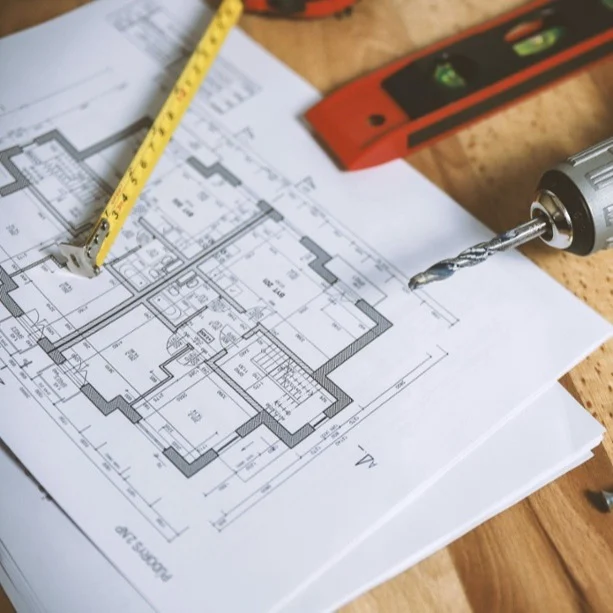When we at Link Labs talk with operations executives about locating their assets indoors, the concerns we hear the most pertain to the accuracy, reliability, and data usage of various solutions. Two location methods come up time and again: GPS and Bluetooth indoor positioning.
Weak indoor accuracy can be frustrating when you’re dealing with a real-time location system (RTLS), as you don’t want a system regularly reporting that the device is in a different room—or even worse, on a different floor—than where it is actually located. However, in some use cases, this level of precision may be sufficient.
System reliability is another notable concern, as anyone who’s lost reception during a phone call can attest—only in the RTLS context, instead of a phone call that needs to be rescheduled, it’s an expensive piece of equipment that needs to be located or replaced.
An RTLS solution with poor accuracy and reliability will almost certainly result in frustration and inefficiency. After all, if you can’t use an indoor positioning system to accurately locate your equipment, is it actually making things more efficient than searching by other means?
Check out this post if you’re curious about how an indoor positioning system works.
Indoor Positioning Accuracy and Reliability
Most people don’t quite know what GPS is and what it isn’t. As this technology has been incorporated in everything from smartphones to fitness watches, it’s easy to confuse a dot on a mapping application with a GPS position. GPS as we have come to know it is rarely ever reading alone, so to speak; smartphones in particular use a variety of additional inputs to identify a location—Wi-Fi sniffing, cellular information, etc. And these additional inputs are relied upon heavily indoors.
While GPS is perfect when you’re driving, outside, or even indoors near windows, GPS struggles to perform indoors. This is primarily because GPS signals on their own are not powerful enough to penetrate deeply into buildings and provide reliable asset tracking indoors. Moreover, GPS devices require another network for transmitting the coordinates determined by the device. Commonly, this will be a cellular or Wi-Fi network, but for asset tracking applications, these backhaul methods can be expensive, unreliable, or both.
Technologies do exist for boosting these signals (such as GPS repeaters and GPS gateways), and these can be useful when you don’t need a high level of precision for your asset tracking—for instance, if you just need to know at which end of your warehouse a part can be found. However, if you need to track to a specific chariot, even these GPS-enhancing technologies are unlikely to meet your needs.
As an alternative to GPS, by calculating location on the device and reporting that to the gateway, a smart Bluetooth Low Energy (LE) beacon can provide greater accuracy. And the use of Bluetooth LE also elegantly solves the backhaul challenge.
The way Link Labs implements indoor positioning accuracy is by increasing the density of Bluetooth LE beacons in an area. This is the same with other power-level-based technologies: The more data inputs there are to the location algorithm, the higher the precision will be. In our solutions, we call our approach just-right precision, which means that if you need more accuracy “here” but can operate with less accuracy “there,” the same system can accommodate both precision and efficiency rather than forcing you to choose which priority is more important and bite the bullet on the other. So you wind up having great coverage in equipment rooms and poor (or no) coverage in bathrooms, for example.
Data Usage Costs for RTLS Solutions
The hidden cost of data usage comes in the overhead of the internet protocol stack—what might otherwise be a 10 byte location update message to the network becomes a 1 kilobyte (1000 byte) message. Multiply this difference (100x) by the number of tracking devices and by the frequency of location updates, and you’ll begin to understand why data usage can be such a huge cost driver for indoor asset tracking.
The hidden cost of data is pushed onto customers in systems that use the available Wi-Fi networks. But if cellular networks are being used for backhaul, the number of connections (each with their own fees) and the amount of data being sent can make or break a use case.
When compared to cellular-connected GPS devices, our approach to indoor positioning also has a major data cost advantage. We install a stand-alone networking layer for our implementations that doesn’t touch customers’ Wi-Fi networks. This network, using our Symphony Link protocol, uses a star-within-a-star network topology to aggregate data to a small number of connections. Many Bluetooth LE devices can talk with each of our access points, and a gateway can talk to many access points. Gateways aggregate and compress data, sending it to the internet. With this in mind, Bluetooth LE is ideal for a fixed site with lots of sensors, as you can use a one-to-many architecture where your expensive cellular connectivity is at a gateway that is backhauling 100 sensors through it at any given moment, rather than once for each individual device, as might be the case with GPS devices.
If you are passionate about IoT infrastructure, there’s plenty on our site about LoRaWAN and, specifically, Symphony Link that you might find interesting and informative—as well as this comparison by RF Wireless World (which is a little dated but still helpful).
Other Considerations
While accuracy, reliability, and data usage are the top concerns raised by operations teams that are considering deploying an indoor positioning system, they are by no means the only concerns.
Here are some other concerns about which we’ve counseled our customers and prospects:
- The cost of each tracking device (Bluetooth is also significantly cheaper than GPS in this respect).
- The cost of maintaining those devices—both in terms of replacing the units and in terms of replacing the batteries within the units. GPS devices require a lot of power, while Bluetooth LE is optimized for long battery life.
- The security of the system, especially over time.
- The system’s ability to function independently of the building’s general Wi-Fi or wired networks
Every application has a different set of needs and requirements, which is why we work tirelessly with our customers to understand their use cases and their business needs and then suggest which solutions might address the issues. Often our Bluetooth indoor positioning solutions are a good fit; if they aren’t, we let our customers know.
Give us a call so we can help you determine if our solutions are right for you. You can also learn more about AirFinder, our flagship indoor (RTLS) solution.




